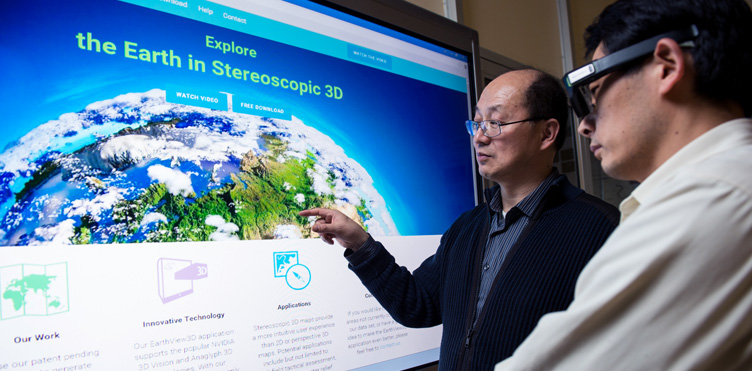
Imagine the wonder and power of a technology like Google Maps but in three dimensions.
Yun Zhang did!
The Canada Research Chair in Advanced Geomatics Image Processing in UNB’s faculty of engineering, who took part in a project that resulted in today’s Google Street View, has invented what he hopes will be the next generation of mapping technology.
Called EarthView3D, it uses NASA satellite imagery, and others, to create detailed, realistic 3D images.
The UNB patent-pending technology is ready to be shared with the world.
“Using our EarthView3D technology, civil engineers can more easily foresee where future roads should be built, the military will be better equipped to go into battle, firefighters and search and rescue crews will have more insight before beginning their missions, and students will learn natural geography more effectively,” says Dr. Zhang. “These are just a few examples of what this technology could be used for.”
“For others, this technology provides the opportunity to ‘travel’ the world, exploring the beauty of nature without having to leave their home,” he says. He hopes to see 3D technology become increasingly mainstream over the next few years.
“I want to see this become the next generation of online maps and become usable for the whole world,” says Dr. Zhang.
His team consists of David Fraser, William Liu, and Marcel Dombrowski, mapping technologists and software engineers in the department of geodesy and geomatics engineering, as well as many graduate and undergraduate students. They have developed a software system for producing and visualizing the 3D and a 3D map prototype that covers the world in low resolution and Canada, the United States of America, Nepal, the Alps in Europe, China, Japan and Korea in high resolution.
He says more partners are needed to advance the technology effectively – to show everyone with Internet access and a 3D monitor or a smartphone and a virtual reality (VR) headset what the entire planet really looks like.
“I recently spoke with a team of MIT researchers and was told that this is one of the most attractive new technologies they’ve seen in a long time,” says Dr. Zhang. “We’re hoping this technology will make 3D more useable to people on a daily basis.”